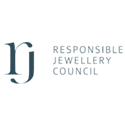The Golden Opportunity
“Gold! Always believe in your soul!” These iconic lyrics from Spandau Ballet’s 1980s anthem resonate with more than just musical nostalgia; they capture the enduring essence of gold as a symbol of lasting value and stability. For centuries, gold has fascinated civilizations, serving as a cornerstone for economies and a personal bastion of wealth. Its lustre hasn’t faded in the modern era, especially in the volatile theatre of global finance where it shines as a beacon of security. Recently, gold has experienced a significant resurgence in value, defying economic trends and reinforcing its status as a safe haven for investors. This surge is not just a fleeting moment but a testament to gold’s unwavering appeal in times of uncertainty. Whether for those with a casual interest or savvy investors seeking a reliable refuge in turbulent markets, gold’s story is one of resilience and timeless allure. As we delve into the world of this precious metal, we uncover the reasons behind its recent price movements and its unshakeable position in the hierarchy of investments.
The Resilience of Gold: A Beacon of Stability in Shifting Economic Tides
The stability of Gold, in contrast to the fluctuations of crypto
In an economic landscape often characterised by volatility and uncertainty, gold has consistently demonstrated remarkable resilience, solidifying its status as a beacon of stability. Over the past year, this enduring appeal has been particularly evident, with gold prices experiencing a significant rise of approximately 15%. This upward trend is even more pronounced when considering the 10% increase since the lows observed in October.
The recent surge in gold prices to record highs can be attributed to a confluence of factors, chief among them being the weakening of the US dollar. This decline in the dollar’s value has been driven by the market’s expectations of a shift in monetary policy, specifically anticipating interest rate cuts by the Federal Reserve. Such economic forecasts often lead investors to seek refuge in safe-haven assets like gold, which historically retains its value in times of financial uncertainty.
What sets gold apart from other investment options is its unique combination of inherent qualities. As a tangible asset, gold is not just a symbol of wealth but a physical embodiment of it. This tangibility provides a sense of security that is often lacking in more abstract investments. Furthermore, gold’s supply is inherently constrained; miners are only able to increase production by an average of 2.5% annually. This limited supply, contrasted with the unceasing demand, inherently bolsters gold’s value.
Moreover, gold’s investment profile is markedly different from more volatile and speculative assets, such as cryptocurrencies. While the latter are known for their rapid value fluctuations, gold offers a stable store of value, less susceptible to such extreme changes. It also carries no liquidity or counterparty risks, distinguishing it as a reliable asset for long-term security.
However, it’s not just the physical attributes of gold that contribute to its resilience; its psychological appeal plays a crucial role as well. Throughout history, gold has been perceived as a symbol of wealth and prosperity. This perception, deeply rooted in cultures worldwide, further drives its demand, especially in times of economic uncertainty.
Economic Optimism and Gold’s Steady Appeal
In an ideal economic landscape, buoyed by growth and stability, investors typically lean towards riskier assets like stocks, expecting them to yield higher returns. Gold, traditionally seen as a hedge against uncertainty and inflation, might be expected to lose its lustre in such times. Surprisingly, this hasn’t been the case. Despite the positive economic indicators and a reduced likelihood of a U.S. recession – with strategists at Goldman Sachs estimating only a 15% chance – gold has maintained its allure.
This unexpected trend can be attributed to several factors. Firstly, the resilience of the U.S. economy, even amidst successive interest rate hikes, has not entirely allayed investors’ fears about future economic uncertainties. In such a scenario, gold continues to be perceived as a safety net. Moreover, the prospect of a ‘soft landing’ for the economy, where growth slows down but doesn’t stall, doesn’t automatically translate to diminished appeal for gold. The metal’s role as a diversifier in investment portfolios remains crucial, especially in a market where other assets can be volatile.



Problems like trade tensions, political unrest in various parts of the world, and ongoing health crises are on the horizon
Additionally, global events and geopolitical tensions continue to play a significant role. Despite economic optimism, uncertainties like trade tensions, political unrest in various parts of the world, and ongoing health crises contribute to a sense of global instability. In these circumstances, gold’s reputation as a stable store of value gains prominence, attracting both individual investors and institutional ones.
Furthermore, the dynamics of interest rates and their relationship with gold are complex. While rising rates typically increase the opportunity cost of holding non-yielding assets like gold, the current economic environment, where interest rates are expected to stabilise or decrease, seems to provide a conducive backdrop for sustained interest in gold.
Central Banks and the Gold Market
Central banks play a pivotal role in the gold market, often acting as major influencers of its dynamics. In 2023, their actions were particularly noteworthy, with a marked increase in gold purchases. This trend is significant considering that central banks globally account for approximately 14% of all gold holdings. Their increased interest in gold can be attributed to several factors.
Firstly, the geopolitical landscape has undoubtedly influenced central bank decisions. The economic sanctions and asset freezes experienced by Russia post-Ukraine invasion have served as a stark reminder of the risks associated with holding large reserves in foreign currencies or assets. Gold, with its universal value and lack of geopolitical ties, presents a safer alternative.
Another contributing factor is the declining strength of the US dollar. Traditionally, the dollar has been the go-to reserve currency for central banks around the world. However, a 3.1% fall in the dollar index since November and its position just above a four-month low have prompted a shift in strategy. As central banks look to diversify their reserves to mitigate risks, gold emerges as a natural choice.
Furthermore, central banks’ purchases are not merely a matter of adding a secure asset to their reserves; they also signal a larger trend towards a more fragmented and possibly contentious global order. In this context, gold’s reputation as a safe haven during times of turmoil gains even more prominence.
Interestingly, the role of central banks in the gold market goes beyond mere acquisition of the metal. Their actions often set a tone for the market, influencing perceptions and decisions of private investors. When central banks increase their gold reserves, it can be seen as a vote of confidence in the metal’s enduring value, potentially sparking interest among private investors.
Lastly, the relative size of the gold market compared to other financial markets is a critical factor. The market for gold is considerably smaller, meaning that even modest shifts in central bank gold holdings can have disproportionate effects on supply, demand, and prices.

Gold offers an a wonderful opportunity for investment in unstable times
As we delve into the complexities and nuances of the gold market, it becomes increasingly evident that gold is not just a commodity, but a pillar of financial security. Its recent performance amidst global economic fluctuations stands as a testament to its unshakable value. In a world where economic forecasts can change overnight, and where digital currencies rise and fall with startling rapidity, gold endures as a bastion of stability.
The role of central banks in this dynamic cannot be overstated. Their increased interest in gold, not merely as a reserve asset but as a strategic tool for diversification, highlights a growing recognition of its importance in a balanced portfolio. This shift is particularly poignant in an era where geopolitical tensions and economic uncertainties are at the forefront. The move towards gold signifies a search for an anchor in the stormy seas of global finance.
For investors, both seasoned and new, the message is clear: gold remains a prudent choice for those seeking to hedge against volatility and preserve wealth. Its historical performance, coupled with its intrinsic qualities – scarcity, durability, and universal value – positions it as a key asset in any investment strategy. This is especially relevant for individuals seeking a safe haven in times of economic turbulence.
Moreover, the enduring appeal of gold transcends its monetary value. It’s a symbol of enduring wealth, a tangible asset in a digital age, and a connection to a long history of human commerce and culture. As we look to the future, gold’s role may evolve with changing economic landscapes, but its fundamental attributes will undoubtedly continue to make it a cornerstone of financial security.
Gold’s recent surge in value is not an anomaly but a reflection of its perennial role in the global economy. For investors and enthusiasts alike, gold is more than just a precious metal; it’s a timeless asset that offers stability, security, and peace of mind in an ever-changing world. As we move forward, gold remains a reliable constant, a treasure as enduring as the stars in the sky and as steadfast as the ground beneath our feet.
Recent articles
The History of Gold as a Currency
Gold continues to shine, even in the prospect of a Goldilocks Economy
Three major changes in the world of gold in the past week
How the Invasion of Gaza is causing investors to flock to Gold once again















